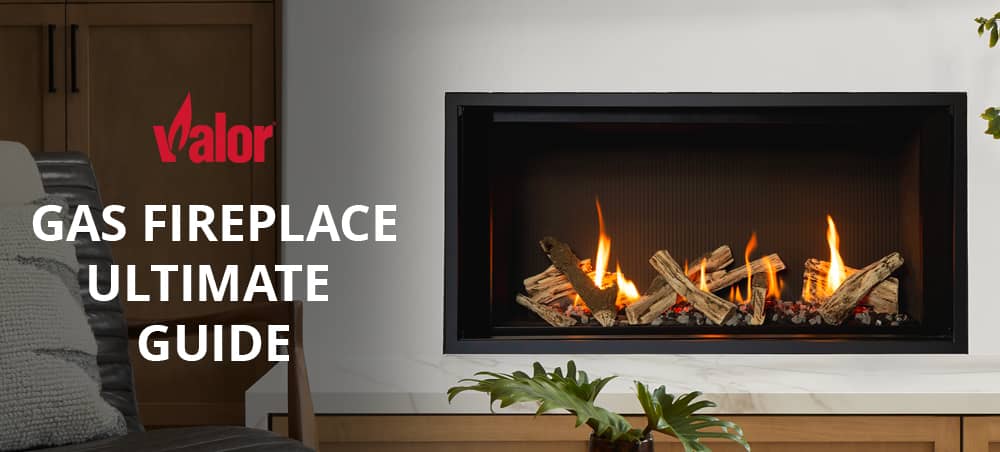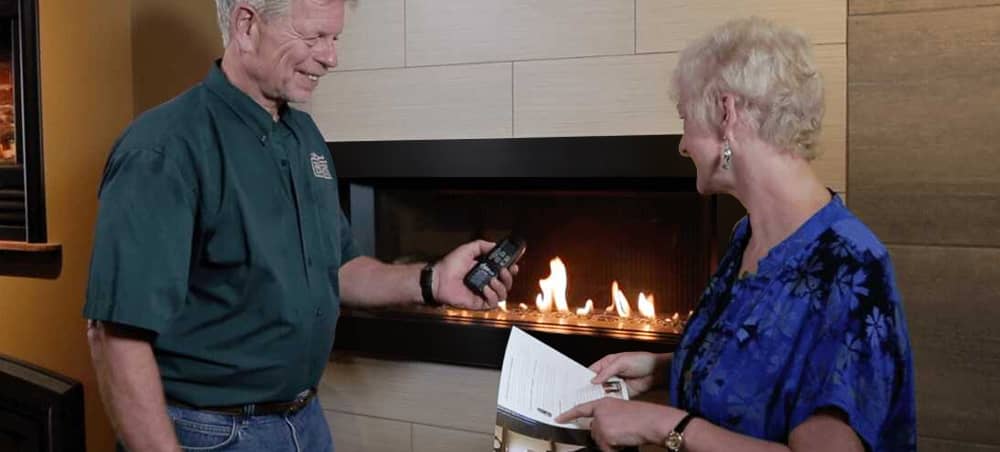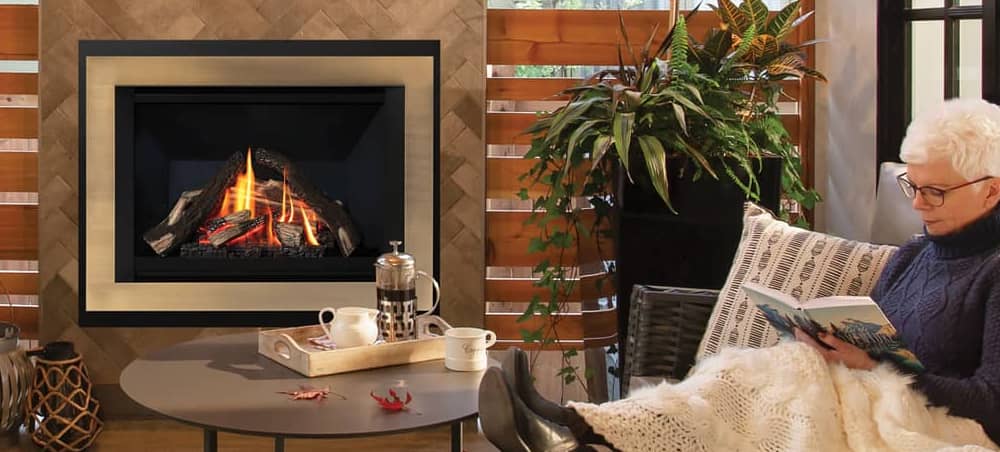Accueil > Blogue sur les foyers > La ventilation d’un foyer : Ce que les propriétaires doivent savoir
Quand on magasine pour un nouveau foyer à gaz, il est facile de porter notre attention sur les esthétiques — les flammes, le manteau de cheminée ou sur les options médiatiques. Mais, derrière chacune des belles flammes, il existe un élément important : le système de ventilation du foyer.
Choisir le bon système de ventilation ne fait pas seulement améliorer la performance — il assure la sécurité, il maintient la qualité de l’air et il protège votre espace vital des sous-produits nocifs de la combustion. Le gaz naturel est responsable de la plus grande portion du chauffage domestique au Nord de l’Amérique; ce qui rend les foyers à gaz un choix populaire pour un nombre de domiciles.
Dans cet article, nous allons explorer les différents types de foyers avec une focalisation sur la ventilation d’un foyer, y compris, comment fonctionnent les systèmes, et comment s’y prendre pour sélectionner la bonne solution pour votre domicile.
Sommaire des points importants à retenir
- La ventilation d’un foyer est essentielle pour maintenir la sécurité, l’amélioration de la performance et la protection de l’air intérieur.
- Les foyers à ventilation directe sont idéaux pour la plupart des maisons, offrant une haute efficacité; de la protection de l’air et la conformité aux normes.
- Les foyers sans évent sont plus flexibles à installer, mais ils sont offerts avec des compromis importants en matière de la qualité de l’air et les restrictions légales.
- Suivez toujours les exigences concernant la ventilation comme il est indiqué dans le manuel d’installation d’un foyer ainsi que les codes de construction locaux.
- Installez des détecteurs de monoxyde de carbone près de tout appareil à combustion, particulièrement dans les chambres à coucher et dans votre espace de vie principal.
- Une installation professionnelle assure que les systèmes de ventilation sont configurés correctement et qu’ils sont sécuritaires pour un fonctionnement à long terme.
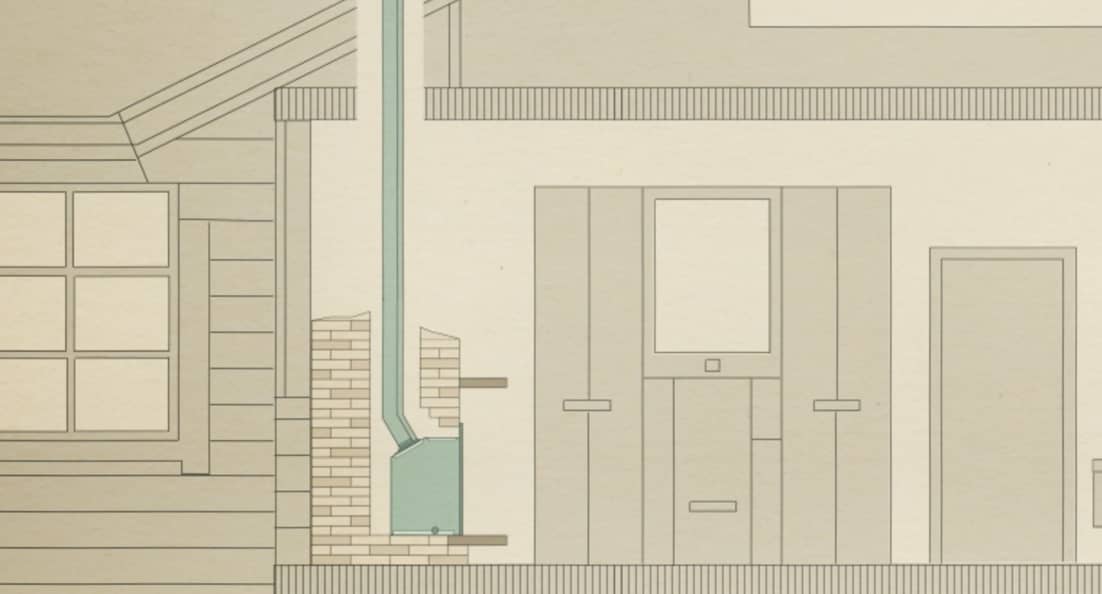
Qu’est-ce que la ventilation d’un foyer?
La ventilation d’un foyer se reporte au moyen que votre foyer tire l’air comburant et enlève les sous-produits de combustion, comme le monoxyde de carbone, l’humidité et les gaz de combustion. Une ventilation adéquate protège votre air intérieur et elle soutient un rendement sécuritaire efficace.
Différents types de foyers — comme les foyers à feu de bois, les poêles à granules de bois ou les foyers à gaz —exigent des systèmes différents de ventilation. Certains, comme les foyers sans évent, n’exigent aucune ventilation externe, mais ils viennent avec des compromis importants.
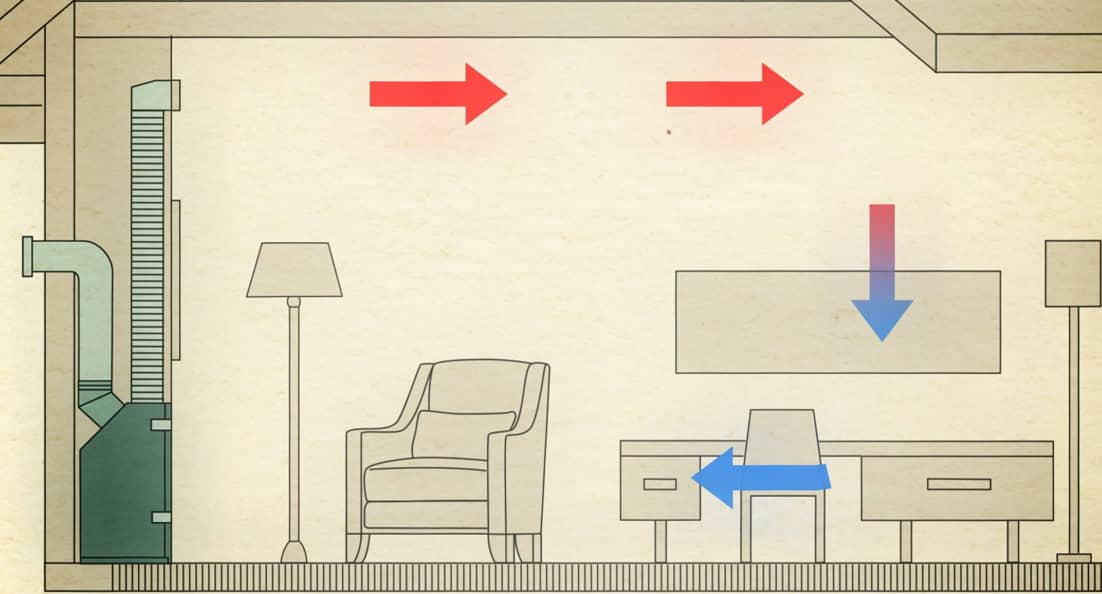
La raison pour laquelle la ventilation d’un foyer est importante
La ventilation d’un foyer joue un rôle critique par rapport à la sécurité et à l’efficacité de l’opération de votre foyer. Alors que la chambre à combustion et les flammes sont les vedettes du spectacle, c’est le système de ventilation qui fonctionne derrière la scène qui protège votre domicile et votre santé. Sans ventilation adéquate, même les foyers les plus splendides peuvent devenir une source de pollution de l’air intérieur, de dommage en matière d’humidité ou même d’une exposition à du monoxyde de carbone.
À son noyau, la ventilation sert trois fonctions essentielles :
L’enlèvement de sous-produits nocifs de combustion
Chaque fois que votre foyer à gaz brûle des combustibles, il produit des sous-produits, comme le monoxyde de carbone (CO2), le dioxyde d'azote, la vapeur d’eau et la matière particulaire fine. Un système de ventilation qui fonctionne bien assure que ces gaz sont dirigés vers l’extérieur par moyen sécuritaire au lieu de persister à l’intérieur de votre domicile où ils peuvent poser des risques sérieux de santé.
La préservation de la qualité d’air intérieur
Une mauvaise ventilation — ou aucune ventilation, dans le cas des foyers à gaz sans évent — peut permettre à ces sous-produits de s’accumuler à l’intérieur. Au fil du temps, ceci peut mener à des niveaux élevés d’humidité, à des problèmes respiratoires ou pires. Dans les maisons modernes hermétiquement fermées, là où le courant d’air est limité, un système de ventilation scellé comme celui de ventilation directe est particulièrement important afin de prévenir la contamination de l’air intérieur.
L’amélioration du rendement d’un foyer
Une ventilation adéquate permet un débit d’air de combustion et de gaz d’échappement constant et équilibré. Cet équilibre est clé à de flammes stables, à une sortie de chaleur efficace et à une fiabilité à long terme d’un appareil. Un système de ventilation mal ventilé peut souffrir de retour de flammes, de problèmes en matière de veilleuse ou une accumulation de suie excessive — tous des indices que le système ne fonctionne pas de manière optimale.
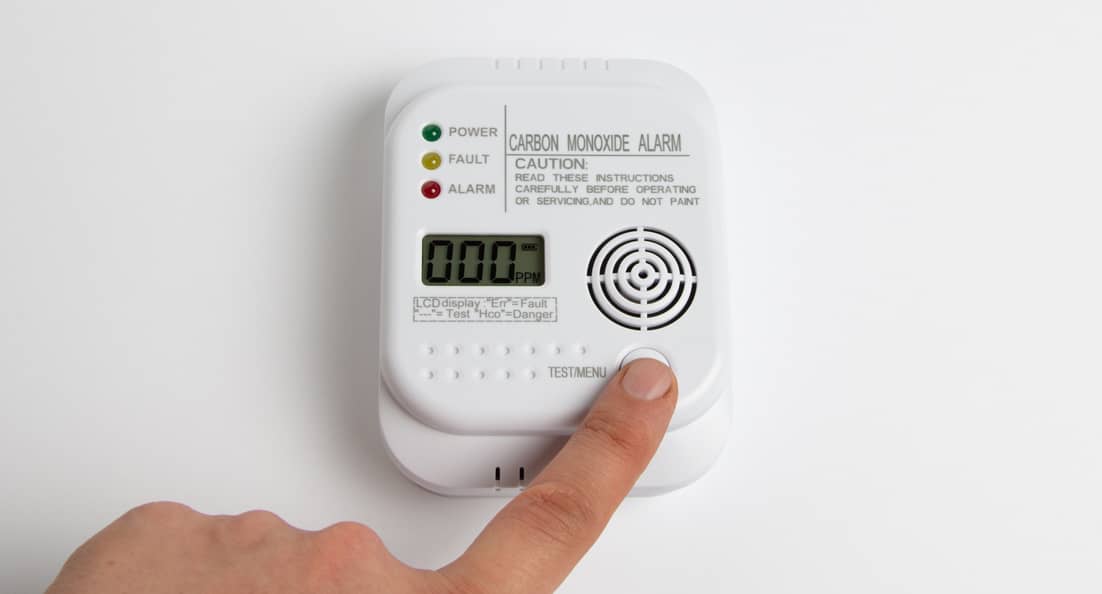
La raison pour laquelle les détecteurs de monoxyde de carbone sont essentiels
Parce que le monoxyde de carbone est incolore et inodore, il peut s’accumuler sans signes d'avertissement évidents. C’est la raison pour laquelle la plupart des codes de construction locaux exigent que des détecteurs de monoxyde de carbone ne doivent être installés près d’aucun appareil à combustion, y compris les foyers à gaz. Ces détecteurs agissent comme votre première ligne de défense et ils devraient être testés de façon régulière.
Le système de ventilation comme mécanisme de sécurité
Songez à votre système de ventilation comme filet de sécurité d’un foyer. C’est ce qui assure que les émanations de combustion sont gérées adéquatement et qu’elles ne retournent jamais dans la pièce. Que vous installiez un appareil à ventilation directe, que vous rénoviez un système de ventilation B ou que vous considériez une option sans évent; la ventilation n’est pas seulement un détail technique — c’est une mesure de sécurité qui impacte directement le bien-être de votre famille. Les foyers à gaz à ventilation directe ont des systèmes à combustion scellée qui protègent la qualité de l’air intérieur en tirant de l’air extérieur pour le feu et qui expulsent à 100 % l’échappement de combustion ainsi que les sous-produits vers l’extérieur de la maison.
Types de ventilation pour foyers à gaz
Il existe trois options primaires de ventilation pour les foyers à gaz — à ventilation directe, les évents B et sans évent. Chacune d’elles est intégrée dans la conception même de l’appareil-foyer. Dans la plupart des cas, vous ne choisirez pas séparément le système de ventilation. Plutôt, le type de foyer que vous sélectionnerez sera déjà configuré pour un genre particulier de ventilation. De plus importants encore, l’aménagement de votre maison et l’endroit où le foyer sera installé déterminent souvent quel type de foyer est possible. Par exemple, une nouvelle maison hermétiquement fermée pourrait être mieux adaptée à un système de ventilation directe, tandis qu’une maison plus ancienne avec une cheminée préexistante pourrait ne soutenir que certaines options de rénovations conviviales.
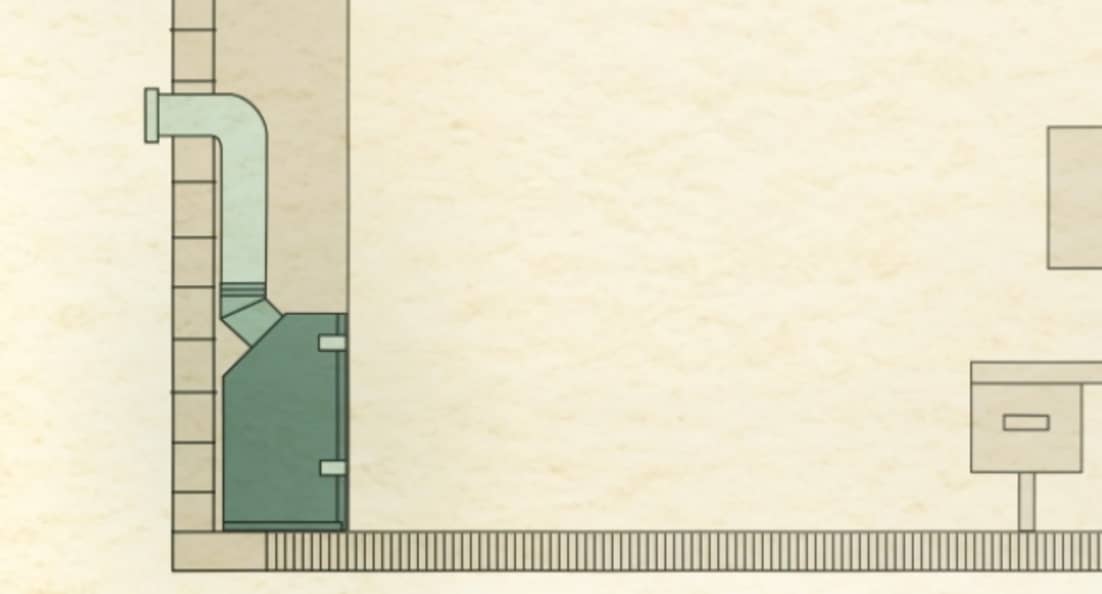
1. Foyers à ventilation directe
Les foyers à ventilation directe sont les plus populaires et les types de foyers à gaz recommandés sur le marché de nos jours. Ces systèmes sont complètement scellés de la pièce, tirant de l’air de combustion de l’extérieur de la maison et expulsant les sous-produits de combustion — comme le monoxyde de carbone, les vapeurs d’eau — les retournant vers l’extérieur à travers un système de tuyau colinéaire ou coaxial (un tuyau à l’intérieur d’un autre tuyau). Les foyers à ventilation directe peut atteindre un taux d’efficacité de 70 % à 85 %, les rendant une option haute en efficacité énergétique.
Idéaux pour :
- De nouvelles constructions et rénovations
- Maisons efficaces du point de vue énergétique
- Des aires à l'intérieur, là où la qualité de l’air est une inquiétude
La raison pour laquelle les propriétaires les préfèrent :
- Ils protègent la qualité d’air intérieur
- Ils sont flexibles à installer (ventilation horizontale ou verticale)
- Ils sont hautement efficaces, avec une combustion étanche et une perte minimale de chaleur
- D’habitude, ils satisfont ou dépassent les exigences des codes de construction locaux
Les foyers à gaz à ventilation directe sont aussi compatibles avec des accessoires alimentés par un ventilateur qui rehaussent la circulation de chaleur et qui peuvent être placés dans des pièces sans cheminée.
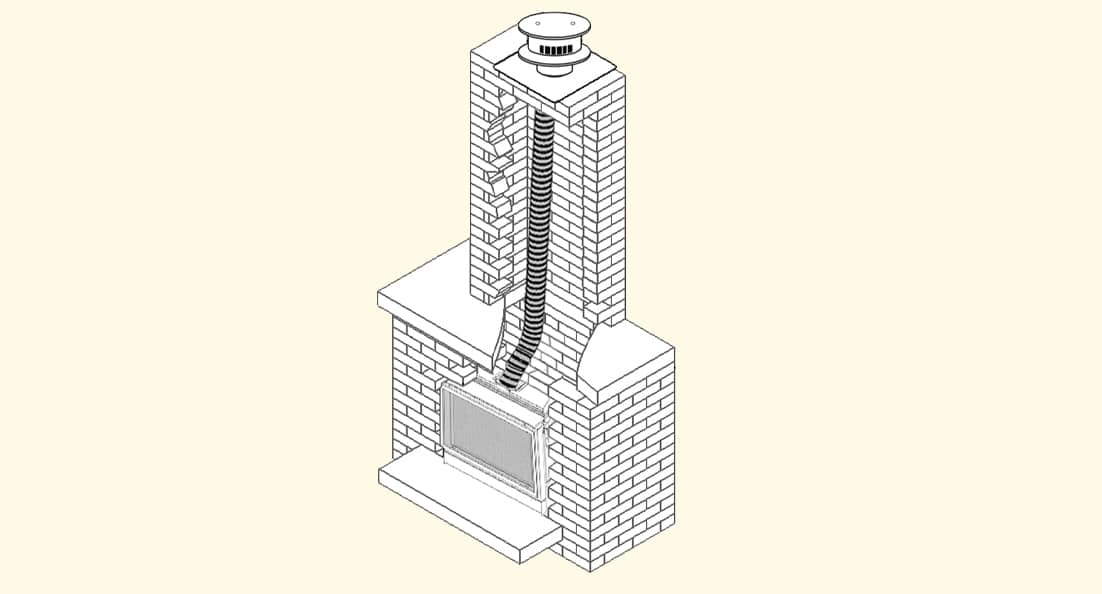
2. Évents B Foyers à (ventilation naturelle)
Les foyers à évent B, aussi connus comme systèmes de ventilation naturelle, se fient sur le principe du tirage d’air naturel. Ils tirent l’air de la pièce pour que les gaz de combustion et d’échappement se dirigent vers le haut et vers l’extérieur par un conduit vertical semblable au fonctionnement des foyers à feu de bois traditionnels. Les systèmes d’évent B tirent l’air d’une pièce vers la chambre à combustion, les rendant moins efficaces que les systèmes à ventilation directe.
Idéaux pour :
- D'anciennes maisons avec des cheminées existantes
- Les situations de rénovation là où une ventilation directe n’est pas possible
Choses à prendre compte :
- Ces systèmes sont moins efficaces — une grande partie de chaleur s’échappe par la cheminée
- Parce qu’ils utilisent l’air intérieur pour la combustion, ils peuvent diminuer la qualité de l’air intérieur
- Les foyers à évents B exigent une ventilation verticale seulement et elle doit se terminer au-dessus de la ligne de toiture
- L’installation peut être plus complexe et dispendieuse s’il n’y existe pas déjà de conduit de cheminée
Les systèmes à évent B sont en train d’être supprimés au profit de systèmes à ventilation directe, mais ils sont toujours utiles dans certaines applications là où la rénovation est limitée par la structure ou le budget.
3. Foyers à gaz non ventilés
Les foyers à gaz non ventilés (sans évent) sont conçus pour brûler le gaz de façon si efficace qu’ils produisent théoriquement de sous-produits minimes. Puisqu’ils n’exigent aucune cheminée ou de conduit de cheminée, ils offrent une flexibilité maximale en matière de placement ainsi que des coûts initiaux d’installation moins dispendieux.
Idéaux pour :
- Les maisons sans options de ventilation réalisables
- Sources temporaires de chaleur ou de chauffage d’appoint
- Installations où on est soucieux d’un budget
Choses à prendre compte :
- Ces appareils rejettent les sous-produits de combustion directement dans la pièce, ce qui peut avoir un effet sur la qualité d’air intérieur
- Ils sont interdits ou hautement restreints dans un nombre de juridictions dans l’ensemble du Canada et des États-Unis
- La plupart des installations exigent de multiples détecteurs de monoxyde de carbone et de la gestion de l’humidité
- Ils ne sont pas appropriés pour de petits espaces, des espaces clos ou des espaces mal ventilés
Alors que les foyers sans évent sont attrayants à cause de leur simplicité, la sécurité et les compromis en matière de qualité de l’air les rendent un choix controversé, particulièrement dans les maisons étanches modernes.
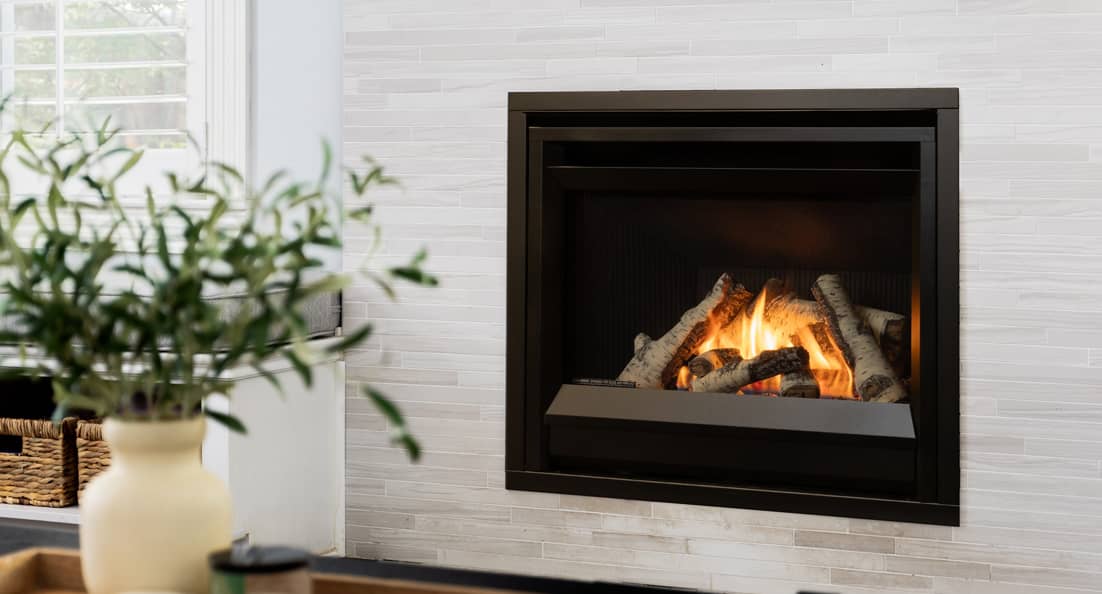
Foyers à ventilation directe : scellés et sécuritaires
Un foyer à ventilation directe utilise un système étanche à combustion qui tire de l’air extérieur vers l’intérieur et rejette les gaz d’échappement de combustion par un tuyau coaxial. Ces foyers à gaz à ventilation directe représentent l’option la plus populaire de nos jours à cause de leur sécurité, leur efficacité et leur flexibilité de conception. Les foyers à gaz à ventilation directe ont la capacité d’offrir du chauffage modulable, permettant aux propriétaires de maisons de réduire les coûts globaux de chauffage en chauffant seulement les espaces qu’ils utilisent.
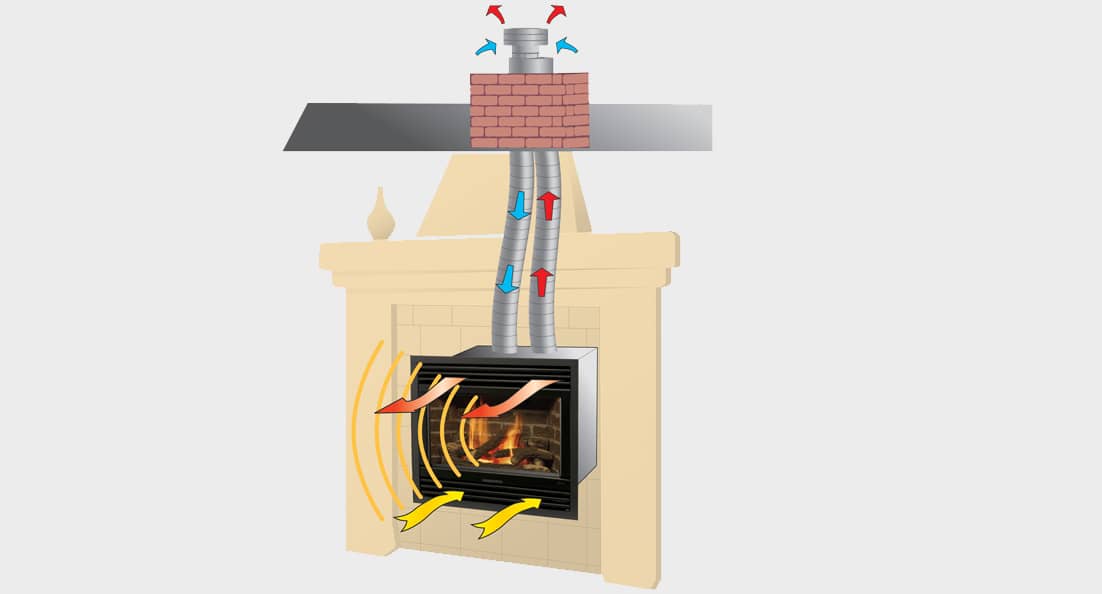
Comment fonctionnent les systèmes à ventilation directe
Les systèmes à ventilation directe mettent en vedette un tuyau double-couche — un tube tire de l’air frais vers l’intérieur pour la chambre à combustion et l’autre expulse les sous-produits de combustion. Cette conception étanche garde l’air intérieur sécuritaire et élimine le besoin d’une cheminée de brique et de mortier.
Les avantages des foyers à gaz à ventilation directe
- Ils gardent la haute qualité d’air à l’intérieur
- Ils offrent une installation flexible (y compris de la ventilation horizontale pour le foyer à gaz)
- Ils augmentent l’efficacité
- Ils se conforment à la plupart des codes locaux de construction
- Ils sont compatibles aux accessoires alimentés par un ventilateur
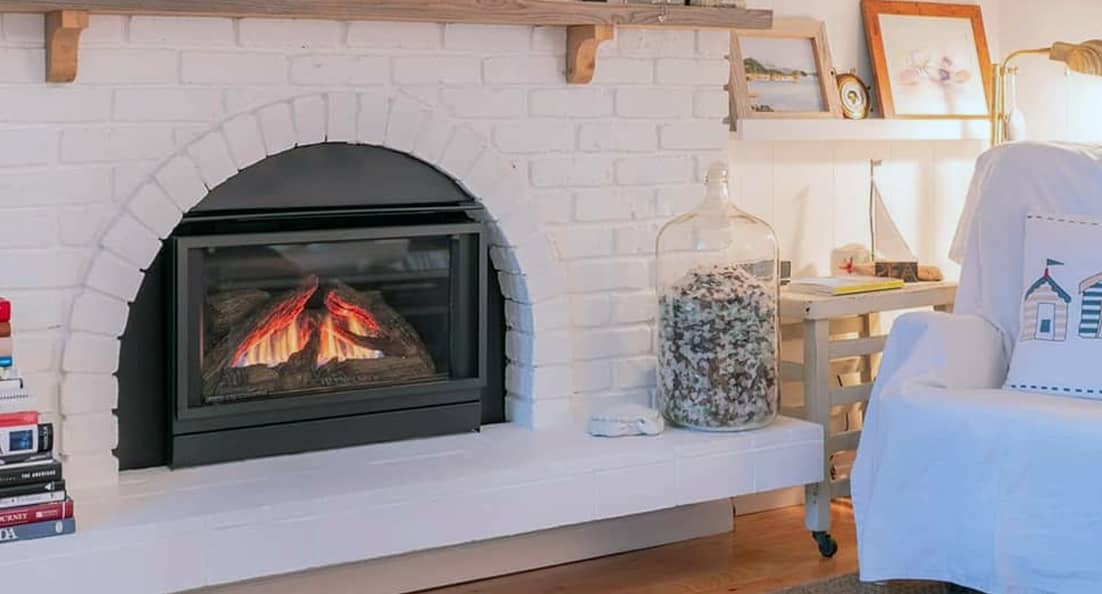
Foyers à évent B : traditionnels, mais limités
Évent B, ou un évent naturel; les foyers se fient sur la flottabilité naturelle pour expulser l’échappement de combustion verticalement à travers un doublage de cheminée ou un conduit de cheminée. Ces foyers tirent l’air de combustion à partir de l’intérieur de votre domicile et dégagent la fumée et les gaz par un tuyau simple.
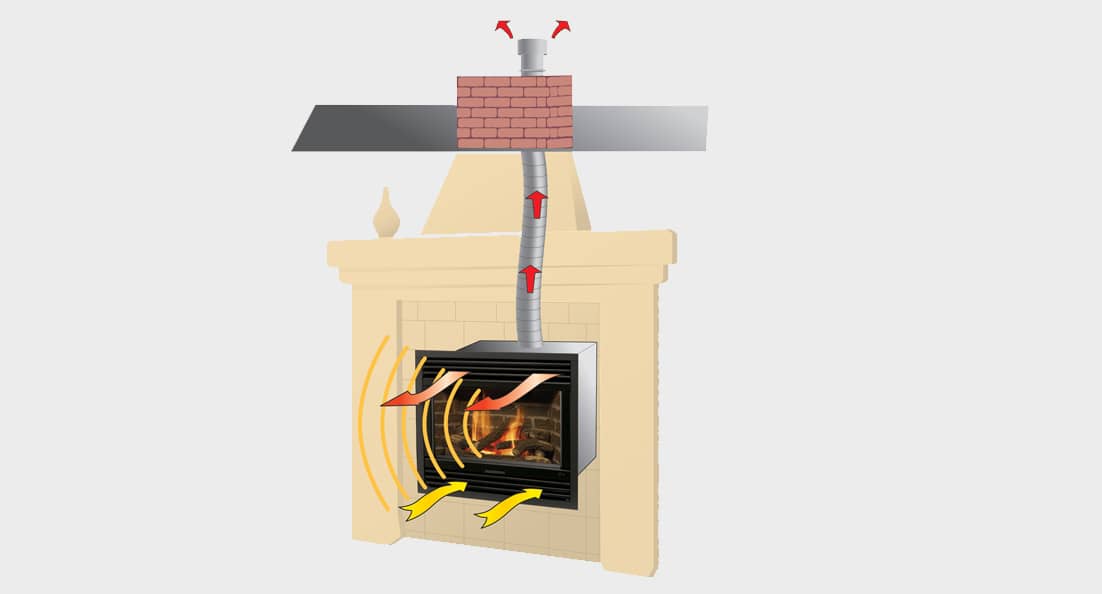
Les aspects négatifs des systèmes à Évent B
- Il est moins efficace à cause de la perte de chaleur
- Il réduit la qualité d’air intérieur
- Il exige une ventilation verticale
- Il nécessite un capuchon de terminaison vertical
- Des coûts d’installation plus élevés
Toutefois, ils sont utiles dans certains scénarios de rénovation là où une ventilation directe n’est pas possible.
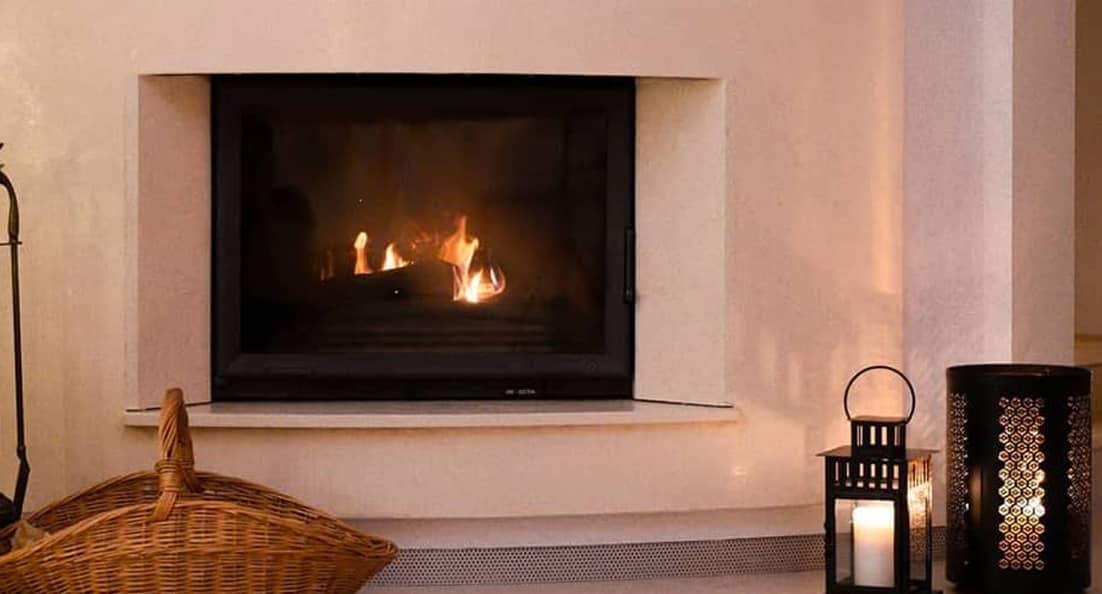
Foyers à gaz non ventilés : Aucune ventilation requise
Les foyers à gaz non ventilés (aussi nommés appareils sans évent) fonctionnent sans évent externe.
Points positifs
- Des coûts d’installation moins élevés
- Placement flexible
Points négatifs
- Une réduction de la qualité d’air intérieur
- Ils ne sont pas permis dans un grand nombre d’endroits à cause des risques de monoxyde de carbone
- Souvent, ils nécessitent des détecteurs de monoxyde de carbone
- Ils ajoutent des inquiétudes concernant la qualité d’air et de l’accumulation d’humidité
Quoique les systèmes non ventilés sont faciles à installer, ils sont matière à controverse et ils sont souvent soumis à une réglementation stricte.
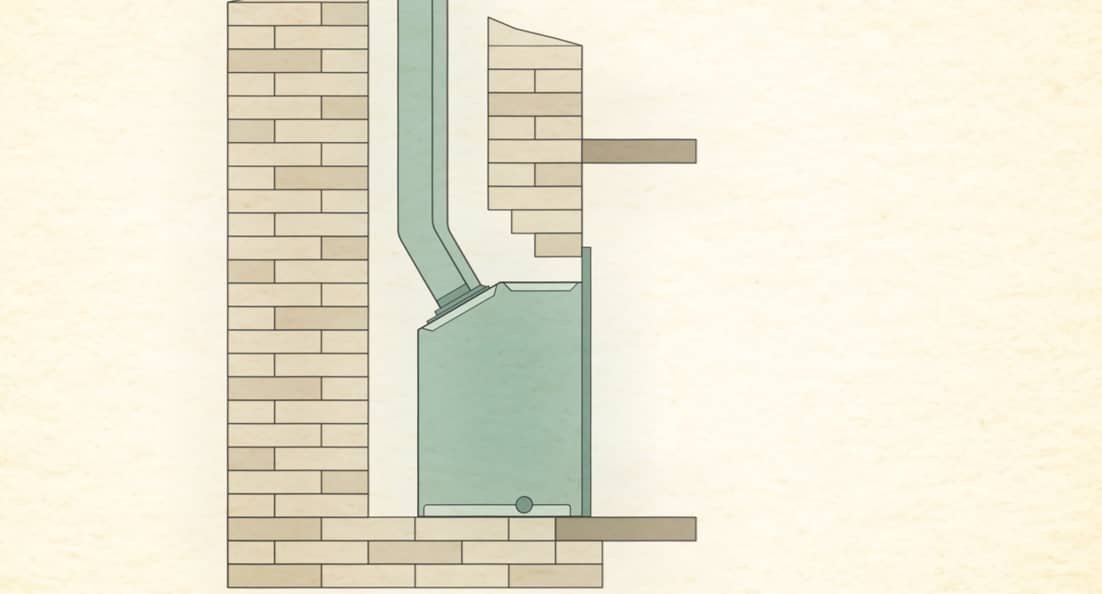
Comprendre les exigences de la ventilation d’un foyer à gaz
Installer un foyer à gaz n’est pas seulement à propos de sélectionner le style et le type de ventilation, c’est aussi à propos de satisfaire les exigences strictes de ventilation qui sont mises en place par les codes de bâtiments, les lignes directrices de fabricants et les réglementations locales.
Que sont les exigences de ventilation?
Les exigences de ventilation d’un foyer à gaz se reportent aux normes techniques et de sécurité qui gouvernent la façon dont un foyer à gaz doit être installé et ventilé. Celles-ci comprennent :
- Les dégagements des matériaux combustibles (murs, isolation, encadrement)
- Le type de tuyau de ventilation et le dimensionnement
- La longueur de la course de ventilation horizontale ou verticale
- Une inclinaison adéquate et la terminaison de la ventilation
- Les accessoires requis (tels le capuchon de terminaison ou le coupe-feu)
- Accéder à de l’air frais pour la combustion dans des systèmes étanches
- Le placement de détecteurs de monoxyde de carbone
Pourquoi ils sont importants
Ignorer ou ne pas comprendre ces codes peut mener à :
- Une accumulation dangereuse de monoxyde de carbone
- Un pauvre rendement du foyer (flammes faibles, condensation excessive)
- Des risques structurels, comme la surchauffe ou des incendies dans la maison
- Des inspections échouées ou des rejets de permis
- Des garanties nulles ou des réclamations d’assurance du propriétaire
Des facteurs qui ont un effet sur les exigences de la ventilation
- Type de foyer (ventilation directe, Évent B, sans évent)
- L’emplacement dans la maison (le rez-de-chaussée par rapport au sous-sol ou au niveau supérieur)
- L’acheminement de l’évent (horizontal, vertical, par une cheminée existante, etc.)
- L’isolation et l’étanchéité de l’air d'une maison
- Le manuel d’installation des fabricants, lequel a toujours la priorité
La conformité envers les codes de bâtiments
Au Canada et aux États-Unis, les exigences de ventilation d’un foyer sont gouvernées par des codes nationaux (tels le Code national du bâtiment du Canada ou la National Fire Protection Association 54 aux États-Unis), mais les juridictions locales ajoutent souvent leurs propres niveaux de réglementation.
- Certaines villes imposent une interdiction totale des foyers sans évent
- D’autres peuvent exiger une ventilation mécanique si un foyer à gaz est ajouté à une maison très hermétiquement scellée
- Certaines municipalités mandatent un dégagement minime de distances de tuyau à ventilation, même si le fabricant permet des tolérances plus serrées
C’est la raison pour laquelle il est essentiel de travailler avec un technicien qualifié CVCA ou bien avec un installateur de foyer qui comprend les spécifications du produit et vos codes locaux.
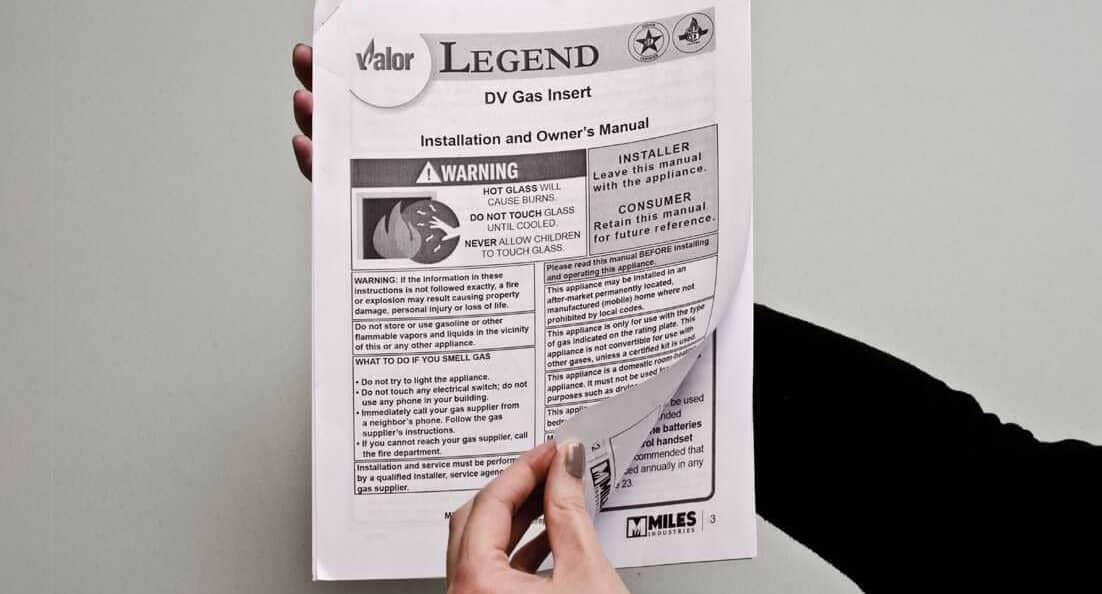
Conseil professionnel : Veuillez toujours vérifier d'abord le Manuel du fabricant
Chaque foyer à gaz est offert avec un manuel d’installation détaillé. Ce document ne représente non seulement une suggestion, il contient les exigences officielles des longueurs des tuyaux de ventilation, les angles, les terminaisons, et plus. Les inspecteurs locaux l’utilisent souvent comme référence pour approbation.
Cliquez ici pour visionner les manuels des foyers à gaz et électriques Valor .
Technologie de ventilation commune et composants
La technologie de ventilation de nos jours a évolué pour offrir un meilleur rendement et de la sécurité. Les composants clés comprennent :
- Des capuchons de terminaison (horizontaux ou verticaux)
- Un conduit intérieur et des tuyaux de la couche extérieure dans les ventilations directes
- Un ventilateur électrique ou un accessoire alimenté par un ventilateur pour rehausser le débit calorifique
- Des systèmes étanches de combustion qui séparent l’air intérieur de l’air extérieur
La ventilation à air pulsé utilise un ventilateur pour rehausser le mouvement de l’air et pour permettre plus de flexibilité dans la conception de ventilation et de son placement.
Des sous-produits de combustion et la qualité d’air
Brûler du combustible crée des sous-produits de combustion, comme des vapeurs d’eau, du monoxyde de carbone et des émanations de combustion. Lorsque ces derniers ne sont pas adéquatement ventilés, ils peuvent nuire à votre air intérieur.
C’est la raison pour laquelle les systèmes étanches à ventilation directe et les détecteurs de monoxyde de carbone sont essentiels.
Comment la ventilation directe améliore la sécurité
Les systèmes à ventilation directe sont conçus avec des chambres à combustion étanches qui isolent le fonctionnement du foyer de l’air intérieur. Cette conception empêche les sous-produits nuisibles de la combustion — tout comme le monoxyde de carbone et le dioxyde d'azote de pénétrer dans la pièce.
En tirant l’air extérieur pour la combustion et en poussant les gaz d’échappement directement vers l’extérieur, ces systèmes éliminent le risque de retour de fumée, lequel peut se produire dans des installations de ventilation moins contrôlées. Dans les maisons modernes, là où la construction hermétique est commune, ce dispositif de sécurité n’offre pas seulement des avantages — il est essentiel. De plus, un grand nombre de foyers à ventilation directe sont testés et certifiés par des organismes de réglementation pour satisfaire les normes strictes de sécurité et d’émissions.
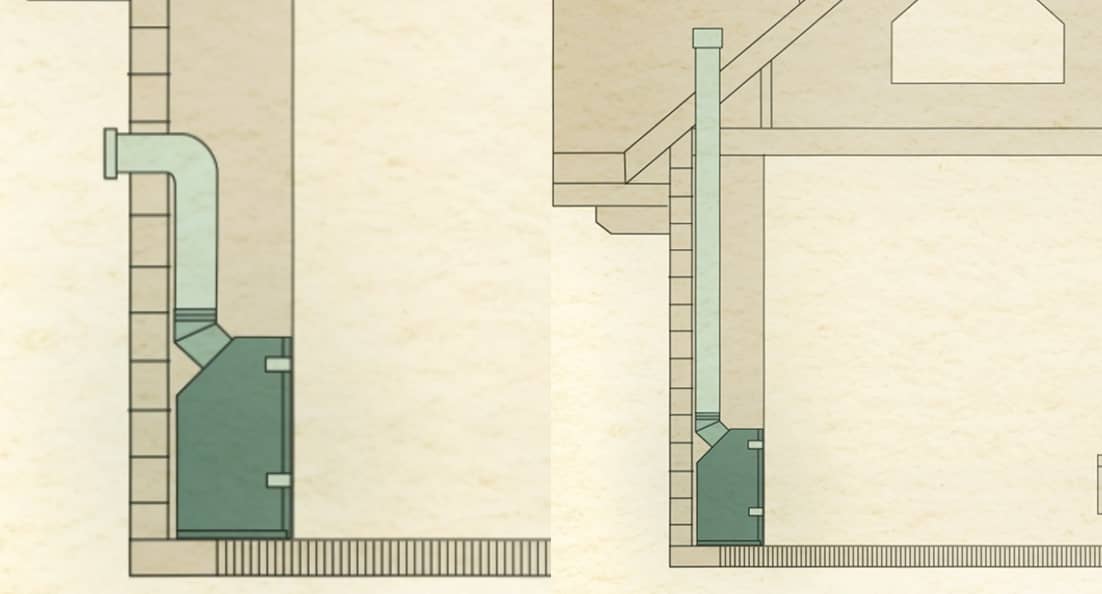
Une ventilation horizontale par rapport à une ventilation verticale
Les foyers à ventilation directe offrent une plus grande flexibilité d’installation grâce à leur soutien de ventilation horizontale et verticale. Une installation d’évent horizontal permet une terminaison de paroi latérale; laquelle est utile lorsqu’un foyer est installé sur un mur extérieur.
La ventilation verticale est idéale pour les situations où la ventilation à travers un toit est plus facile ou esthétique, comme les maisons à multiples étages avec plafond cathédrale. Chaque configuration nécessite des exigences uniques — les courses horizontales nécessitent une inclinaison adéquate et des dégagements, tandis que les courses verticales exigent des capuchons pour empêcher les courants descendants. Par contre, les systèmes à évents B doivent être ventilés verticalement et au-dessus de la ligne du toit, ce qui peut limiter le placement du foyer qui se fait installer.
Les foyers et la qualité d’air intérieur
La qualité d’air intérieur peut être affectée considérablement par le type de foyer et de ventilation utilisée. Les foyers à gaz adéquatement ventilés, particulièrement dans les systèmes étanches à ventilation directe, maintiennent du bon air intérieur en expulsant les sous-produits de combustion vers l’extérieur de la maison.
D’autre part, les foyers sans évent rejettent une petite quantité de gaz de combustion — y compris des vapeurs d’eau et du dioxyde de carbone — directement à l’intérieur de l’espace vital, augmentant potentiellement l’humidité intérieure et les niveaux de polluants. Avec le temps, ceci peut mener vers une croissance de moisissure, de la condensation sur les fenêtres ou une irritation respiratoire. Pour les propriétaires de maison, un environnement intérieur sain devrait être une priorité — particulièrement pour ceux qui ont des enfants, des aînés en résidence, ou bien des conditions respiratoires — un foyer à ventilation directe représente le choix supérieur.
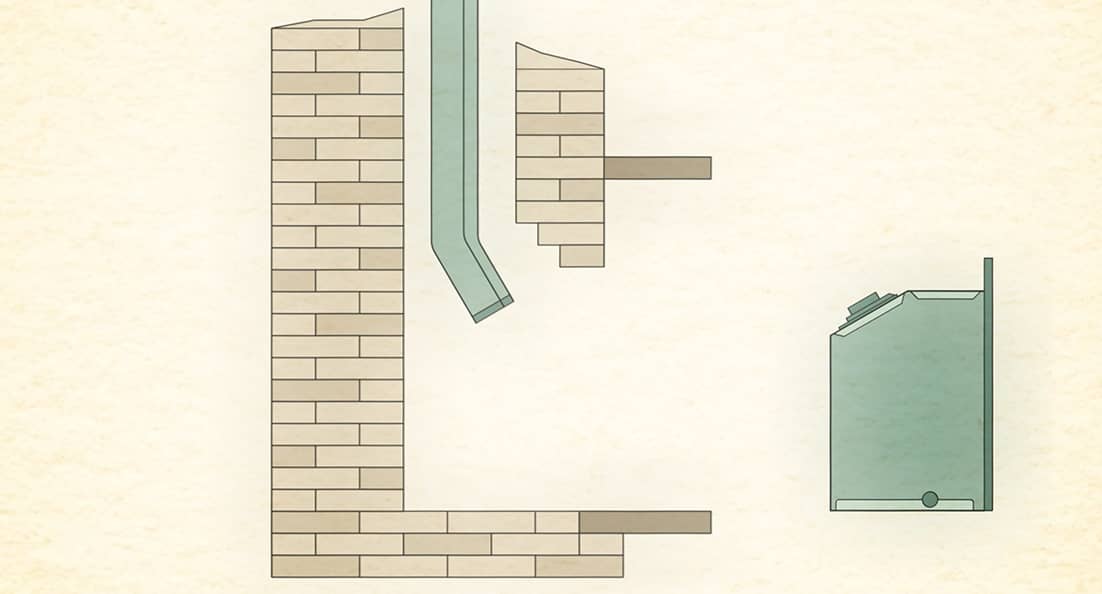
Foyers à gaz encastrables et ventilation
Si vous planifiez une mise à niveau d’un ancien foyer à feu de bois, un foyer à gaz encastrable représente un excellent moyen d’ajouter du confort et de l’efficacité. Ces foyers encastrables sont conçus pour s’intégrer à l’intérieur de votre chambre à combustion en maçonnerie existante, et à ventiler par la cheminée existante.
Cependant, pas tous les systèmes de ventilation sont compatibles avec cette configuration. Par exemple, un type commun de ventilation qui s’appelle coaxial — lequel utilise une conception d’un tuyau dans un tuyau — d’ordinaire, il est trop large ou trop rigide pour passer dans une cheminée traditionnelle en brique. C’est la raison pour laquelle la plupart des foyers encastrables utilisent plutôt un système colinéaire avec deux revêtements flexibles : un pour tirer l’air de l’extérieur et un pour ventiler l’échappement. La conception de votre cheminée actuelle détermine d’habitude quel type de ventilation peut être utilisée et non votre préférence.
Combustion et débit d’air frais
Chaque foyer à gaz se fie sur un équilibre délicat de mazout, d’air frais et d’un échappement adéquat pour brûler de manière sécuritaire et de façon sécuritaire. Sans débit d’air suffisant, le foyer pourrait produire du monoxyde de carbone en excès ou une combustion incomplète, ce qui pourrait mener vers des conditions dangereuses.
Les systèmes à ventilation directe assurent un approvisionnement constant d’air frais provenant de l’extérieur, ce qui élimine la dépendance sur l’air intérieur et minimise les courants d’air. Maintenir des dégagements de ventilation adéquats et garder les conduits d’admission d’air libres de débris ou d’obstruction est critique pour un rendement sécuritaire d’un foyer.
L’explication des systèmes étanches à combustion
Un système étanche à combustion est une marque de conception des nouveaux foyers à gaz modernes, particulièrement dans les modèles à ventilation directe. Ces systèmes séparent le processus de la combustion du foyer de l’espace vital dans la maison en enfermant la chambre à combustion et en utilisant un tuyau d’évacuation à double chambre.
Un canal apporte de l’air frais de l’extérieur, tandis que l’autre pousse les sous-produits de combustion vers l’extérieur. Cette configuration élimine le risque de contamination d’air intérieur et permet aux foyers d’être installés dans des maisons très étanches sans compromettre la ventilation. Les systèmes scellés améliorent également l’efficacité énergétique en empêchant la perte de chaleur à partir des conduits de cheminées ouverts ou des courants d’air.
Une installation professionnelle est clé
Même le système de foyers le plus avancé peut devenir non sécuritaire s’il n’est pas installé correctement. Les angles des tuyaux à ventilation, les dégagements, les terminaisons, le dimensionnement des conduites de gaz et le placement de l’appareil doivent tous être conformes aux codes locaux de construction et des lignes directrices du fabricant.
C’est la raison pour laquelle il est essentiel qu’une installation professionnelle soit exécutée par un technicien certifié en gaz ou un entrepreneur qui est certifié en CVCA. Les installateurs ont eu une formation pour évaluer la structure de votre domicile, assurer les voies de ventilation et confirmer les exigences en matière de sécurité — comme satisfaire la nécessité d’un placement d’un détecteur de monoxyde de carbone. Ils peuvent également retirer des permis au besoin et s’assurer que l’installation passe l’inspection.
Conclusions sur le choix du bon foyer
Que vous soyez à construire une nouvelle maison ou à rénover un foyer existant, la ventilation ne devrait jamais être une considération secondaire. C’est la fondation d’un système de foyer à gaz sécuritaire et efficace. En choisissant un modèle de foyer qui utilise un système de ventilation adéquat — comme à ventilation directe, Évent B, ou sans évent — vous pouvez assurer que l’appareil s’aligne avec vos besoins de ménage et qu’il se conforme aux codes locaux de construction. Les types de ventilation sont construits dans la conception de chaque foyer, donc il est important de choisir un modèle avec une approche de ventilation qui convient le mieux à votre domicile.
Alors que les options sans ventilation peuvent être attirantes aux personnes qui ont des contraintes budgétaires et en espace; les foyers à ventilation directe restent la meilleure solution globale pour un confort à long terme, la sécurité et des économies énergétiques. Veuillez travailler avec un concessionnaire qualifié en foyers ou un installateur qui peut évaluer votre espace, qui comprend les exigences des codes et qui peut prendre une décision éclairée; laquelle pourra garder votre domicile au chaud et votre air propre pour des années à venir.
Table des matières

